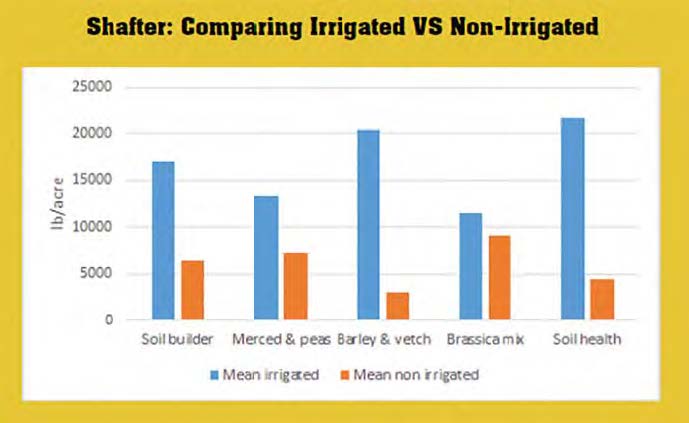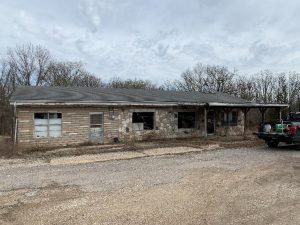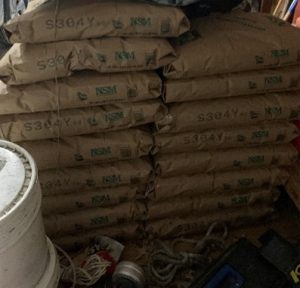Author: Bill Sync
This year the entire West and Northern Midwest is experiencing drought, leaving some growers with barely enough water to keep their crops healthy. Beekeepers are also struggling in places like North Dakota, where honey bees are preparing for almond pollination in February and some beekeepers are reporting record low honey crops. When nectar dries up, bees struggle to produce the honey they need to survive Winter.
Blooming cover crops benefit both beekeepers and growers by providing better nutrition for bees, increasing the soil’s water-holding capacity by adding organic matter, increasing water infiltration, reducing erosion, and providing natural weed control. Having forage available when bees arrive for pollination can help colonies build up strength after a tough year and ensure good pollination. On an exceptionally dry year, some cover crop plantings may not flourish as well as a year that sees average or above average rainfall. Even if your cover crops are not as robust as you might like them to be this year, the benefits are still valuable and are worth the effort.
What To Expect
Water is precious and promoting cover crops raises some important questions about water use. Seed blends intended to be planted in California’s Central Valley should contain species that have low moisture requirements. Sowing seeds in the fall is a great way to take advantage of fall and early Winter rains. If planted early to utilize the seasonal rains, robust, well-growing cover crop stands are possible without the use of irrigation. Early planting also encourages an early bloom which provides nutrition for honey bee colonies pollinating almonds. Planting September 10 through November 10, while soil is still warm (above 55⁰F) is an appropriate time to plant any cover crop in California. However, to ensure species like canola, mustard, and radish will bloom before almonds it must be sown and germinated before November 1. While not necessary for an adequate stand, irrigation can be used to ensure a more robust cover crop for some mixes.
Enrollees of Project Apis m’s (PAm) Seeds for Bees® program receive seed mixes designed to be successful in harsh conditions like the non-irrigated middles of orchards. If water availability is a concern, select seed mixes that are the most efficient at growing successfully in droughts. The PAm Clover Mix, for example, requires more moisture than the PAm Brassica Mix which can perform well with average seasonal rain, no irrigation needed.
Recent trials conducted by University of California Cooperative Extension researchers Shulamit Shroder and Jessie Kanter give some insight as to what growers can expect from a cover crop that is grown in drought conditions. During the 2020/2021 season, a variety of cover crop mixes were evaluated at the Shafter (Kern County) research station. Most of the irrigated seed mixes were more successful than the non-irrigated ones by providing about twice as much biomass, with the brassica mix being the exception as seen in Table 1 (Shroder, Shulamit and Kanter, Jessie 2021). However, they conclude “all of the non-irrigated plots contributed some amount of biomass. This means that even if you cannot irrigate your cover crops, you can still reap some soil health benefits.”
How Cover Crops Can Increase Water Use Efficiency
Growers who participate in Seeds for Bees receive technical advice specific to them, and our team will help you determine what mixes are most appropriate for your operation and water use goals. There is evidence to suggest that planting cover crops increases water use efficiency and water availability. Cover crops add organic matter to the soil. Organic matter is excellent at holding water; it works like a sponge that traps and retains water.
• Organic matter holds 18-20 times its weight in water (USDA NRCS 2013). One can expect the PAm Seed Mixes to provide about 3.5 tons of organic matter per acre.
• There are 1,000,000 tons of soil in six-inch deep acre plot, so growing a cover crop to about waist high will provide 0.03%-0.05% of organic matter every year. Just 1% organic matter in the top six inches holds up to 27,000 gallons of water! (USDA NRCS 2013).
Organic matter helps water stay where it’s needed most, around the root systems of crops. But cover crops also use water, so let’s take a closer look at how much water cover crops use in an orchard system.
How Much Water Do Cover Crops Use?
Cover crops grown in the fall and Winter months will need less water due to shorter days and cooler temperatures. More research needs to be done to determine how much water cover crops use from October to March. Typically, this is the time of the year when Seeds for Bees cover crops are growing. However, there is still something to be learned from a 1989 cover crop study that took place in an almond orchard from April to August. The results were published in California Agriculture in an article titled, “Orchard water use and soil characteristics,” by Prichard, et al. The results are shown in Table 2 (below). Resident vegetation (weeds), clover, bromegrass, and herbicide (bare ground) were the four treatments that were compared in two orchards: a newly planted one (Orchard A) and a mature one with 70% soil shading (Orchard B). The herbicide (bare ground) treatment used the least amount of water. Bromegrass used from 4% less to 18% more water than bare ground. Clover used more than bromegrass, 14% to 29% more than bare ground, and the most water was used by weedy resident vegetation, from 17% to 36% more than bare ground. A clover cover crop used less water than resident weeds! If something is growing on the orchard floor, it might as well be a cover crop. It will use less water than the weeds while increasing the soil’s water-holding capacity.
The 2021-2022 Seeds for Bees open enrollment period is happening now. Interested growers are encouraged to apply at ProjectApism.org/Seeds-For-Bees. We are currently accepting applications through November 15th, or until we run out of seed. California growers of all types can apply and first year applicants are awarded up to $2,000 of free seed. Don’t forget – early planting is key to getting the most benefit as possible from your cover crop stand. Sign up today!
Feel free to contact me, Billy Synk, at Billy@ProjectApism.org for any questions regarding the Seeds for Bees program, cover crops, habitat, or bees/pollination









